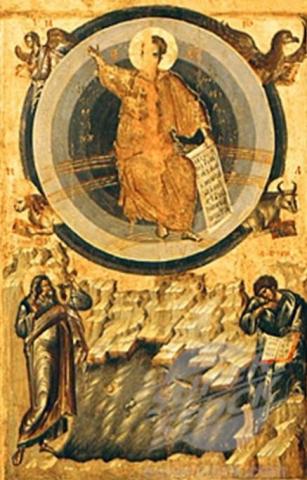Ezekiel
EZEKIEL
Possible Lesson Plan:
- Open with prayer.
- Scripture Reference: Ezekiel 1, 3:1-6, 4, 17:1-12, 37. Ezekiel is a book full of visions. Have the students scan each of the assigned passages. Give each student a slip of paper with a passage on it and play “Pictionary” with each student in turn drawing a picture of the vision and the class guessing which vision it is.
- History: Ezekiel lived at the time of the fall of Judah and the Babylonian captivity. Unlike Jeremiah, Ezekiel was carried away a captive with Daniel and the three young men. Initially the temple of Solomon was left intact. Ezekiel continued calling the people to repent of their sinful ways. They didn’t and 10 years later the temple was destroyed and the city of Jerusalem wrecked.
- Service References: Ezekiel 37 is most prominently read in the Matins of Holy Saturday, commonly celebrated on Holy Friday evening. What do the dry bones prefigure? But the most regularly referenced prophecy of Ezekiel is that of the “Gateway” in Ezekiel 43-44, read in the vespers of Annunciation. In the vespers of the Nativity of the Theotokos, Mary “is the only gateway of the Only begotten Son of God, who passed through this gate, yet kept it closed.” Again, at her entry into the temple, “Having opened the gates of the temple of God, the Glorious Gate through which human thoughts cannot pass now urges us to enter with her and to delight in her divine marvels.” At Christmas, “He has newly appeared from the closed gate”. How is Mary a gate? To what? Finally, the prophecy of Ezekiel 36 with the pouring out of the Spirit to the Gentiles is read on Pentecost. Why?
Iconic References: In most Orthodox Churches there is a representation of Ezekiel 1: 10 – “As for the likeness of their faces, each had the face of a man; each of the four had the face of a lion on the right side, each of the four had the face of an ox on the left side, and each of the four had the face of an eagle.” We see here Jesus the man as God incarnate, Jesus the lion for His divinity, Jesus the calf for His sacrifice for our sins, and Jesus the eagle for His resurrection and ascension. And, traditionally, these are each associated with one of the Evangelists – the man for Matthew, the eagle for John, the bull for Luke, and the lion for Mark. So in our own church look again to see the huge ceiling icon and each of the writers of the gospels in the ceiling corner indicated by his symbol.
- Discussion: The most famous of these visions is the dry bones. How did Ezekiel use the image of the bones? Do you ever feel “dried up” like the bones in the desert? Discuss. How does God’s action on the dry bones apply to you? What does this story tell you about God?
Ezekiel lived in a very hard time for the Jewish people – a time of great disappointment and sadness. We, too, often live with disappointments and hurts. How did Ezekiel respond to his misfortune? Did he lose hope in the Lord, his people, the whole world? What does the vision of the dry bones tell you about hope?
- Have each student consider the most painful problem he or she is facing – a family problem, one with a friend, poor self-esteem, etc. – and write it down. How does it feel to actually write down the problem? Now, give your dry bones to God – talk to Him about the problem and turn it over to Him. Is it hard to give problems to God? Why or why not? It’s also hard to carry burdens alone. God didn’t raise a single body from the bones; He raised an army. So we are to share our burdens with each other. Share the problems (either out loud or by folding the papers and putting them together in the center of the circle). Is it hard to share our problems with others? Pray together for all the problems and continue to pray for each other throughout the week.

S